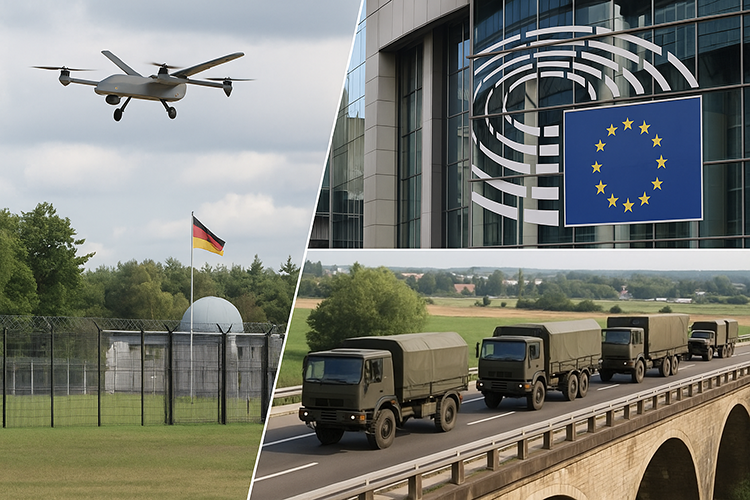2025-10-05
other

A series of incidents across Europe has deepened unease about the continent’s security and political stability. Within the span of a few days, reports surfaced of drones flying over a Belgian military base, Polish investigators uncovering a plot to smuggle explosives hidden in corn tins allegedly linked to Russian operatives, and a backlash in the European Parliament after several members met privately with Russian lawmakers. At the same time, France has proposed the creation of a new EU post — a military mobility coordinator — to ensure troops and equipment can move quickly across Europe in the event of crisis. Each event has its own context, yet together they paint a picture of a continent facing simultaneous tests of its resilience. Belgium’s drone sightings point to the probing of NATO’s defensive infrastructure. Poland’s case reveals the ongoing shadow war being waged through covert means. The Parliament’s controversy exposes political vulnerabilities within the EU itself. And France’s call for faster military coordination underscores how slow Europe remains in translating its security ambitions into practical capability. Belgian defence officials confirmed that roughly fifteen drones were detected over the Elsenborn training range near the German border during routine surveillance operations. The flights were described as “unusual” and “potentially coordinated,” prompting an investigation into their origin. Similar sightings have been reported in Germany and the Czech Republic in recent months, suggesting a pattern of reconnaissance activity near strategic facilities. Though no state has been officially blamed, the incidents have reignited concerns over hybrid warfare and intelligence gathering in European airspace. In Poland, prosecutors disclosed an investigation into what they described as an attempted smuggling of explosives disguised as canned corn. The materials, reportedly of Russian origin, were allegedly meant for sabotage operations within the country. While the motive remains unclear, officials hinted that Poland’s high-profile military support for Ukraine may have made it a target. The case follows a series of arrests of suspected Russian agents earlier this year accused of plotting attacks on logistics hubs linked to Ukraine’s supply chain. Meanwhile, in Brussels, the European Parliament is grappling with its own crisis after news broke that a small group of MEPs had met Russian Duma members despite ongoing sanctions and diplomatic restrictions. The meeting, which took place outside official EU channels, has drawn condemnation from within the Parliament. Critics say it undermines the EU’s unified stance against Moscow and risks normalising contact with officials from a sanctioned government. The controversy reflects a deeper challenge: as Europe hardens its external posture toward Russia, internal divisions continue to test the limits of its political cohesion. Amid these tensions, France has stepped forward with a plan aimed at strengthening Europe’s operational backbone. Paris wants the EU to appoint a military mobility coordinator who would oversee cross-border movement of troops and equipment, cutting the current transit time — which can exceed ten days — down to just five. French military officials argue that Europe’s response capacity is dangerously slow, dependent on fragmented national approvals that could delay reinforcements in an emergency. The European Commission is expected to present formal proposals in November to simplify these procedures and establish dedicated “mobility corridors” across member states. The convergence of these developments suggests a wider pattern of stress across the European security landscape. Drone incursions challenge military readiness, sabotage attempts expose domestic vulnerabilities, political outreach to sanctioned actors strains institutional integrity, and bureaucratic bottlenecks hinder rapid defence coordination. Though none of the incidents are directly linked by evidence, they collectively illustrate the complex spectrum of modern European insecurity — where the battlefield extends from the skies to the corridors of power. Analysts see these overlapping events as signs that Europe is being tested both from without and within. Some warn that hostile actors may be using hybrid tactics to probe defences, spread confusion, and erode public trust. Others argue that the real issue lies in Europe’s slow adaptation to a new security reality that demands not only military strength but also political unity and logistical readiness. As investigations continue in Belgium and Poland, the European Parliament weighs its internal response, and France pushes for structural reform, one conclusion is difficult to escape: Europe’s security front line no longer runs solely along its eastern borders. It now extends through its skies, its institutions, and its infrastructure — wherever resilience, coordination, and resolve are being tested. Editorial Note: Views expressed are prospective and for information only.

